Strategies to promote your affiliate links
Affiliate marketing means being strategic
Since affiliate marketing isn’t passive income (no matter what else you hear online), you’ll have to be strategic about how you start promoting your affiliate links. You can’t expect to make one YouTube video or add the link to a single newsletter and pay off your Mykonos trip.
The reality is that you’ll need to combine at least three to four of these promotional methods instead of focusing on one (it’ll be hard to get one of these strategies to drive high enough volume for a bigger payout).
Think of it this way: more traffic = more conversion opportunity = more affiliate sales

By promoting your affiliate links in your articles, newsletter, YouTube videos, and podcasts…you’re creating more traffic. More traffic creates more conversions and leads to being able to one day book that trip to Greece and get those insanely aesthetic photos to post to Instagram.
7 strategies for promoting your affiliate links
Strategy #1: Share links in your blog posts
Your blog articles (or newsletters published to your landing page or website) are read by an audience of people who love to read about your honest product reviews, insights, perspectives, and the tools you use as a creator—that makes them a great starting point for promoting your affiliate links.
Bloggers can promote affiliate links in your blog posts by directly linking them as a backlink, adding in graphics with an outbound affiliate link, or embedding your videos with a promotion for that link. Let your audience know what the benefit of this product is to them, showing how much it’s helped you and how it can help them with a specific problem or challenge they have.
Pat Flynn does a great job of this as a member of the ConvertKit affiliate program. He uses his blog to promote ConvertKit authentically to his audience.
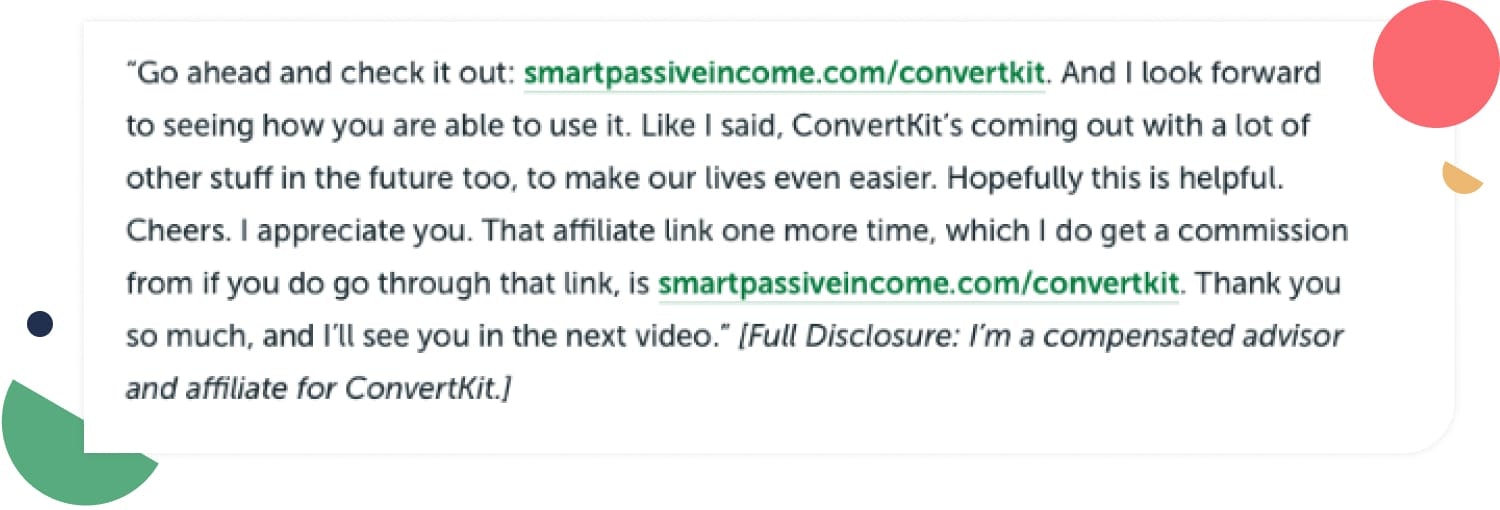
Strategy #2: Email your list
Your email list is filled with people who have subscribed to see your content. This shows just how much they care about what you’re up to—and how you’re doing it. Think of the creators that you follow online…learning how they set up their business, ideate content, and their creative process is interesting. Your subscribers think the same for your emails as well.
There are two ways to promote affiliate links in your emails. Either you can write emails that center around promoting that link (like you would a product launch or new episode of your podcast) or you can promote the links organically in content you were sending your list anyway. You can also do both of these strategies for maximum exposure to your affiliate link.
In each Newsletter Crew email, they promote other newsletters their audience would be interested in. Some of these, like The Profile, are paid newsletters that can give Newsletter Crew a commission for every Newsletter Crew subscriber that signs up for The Profile.
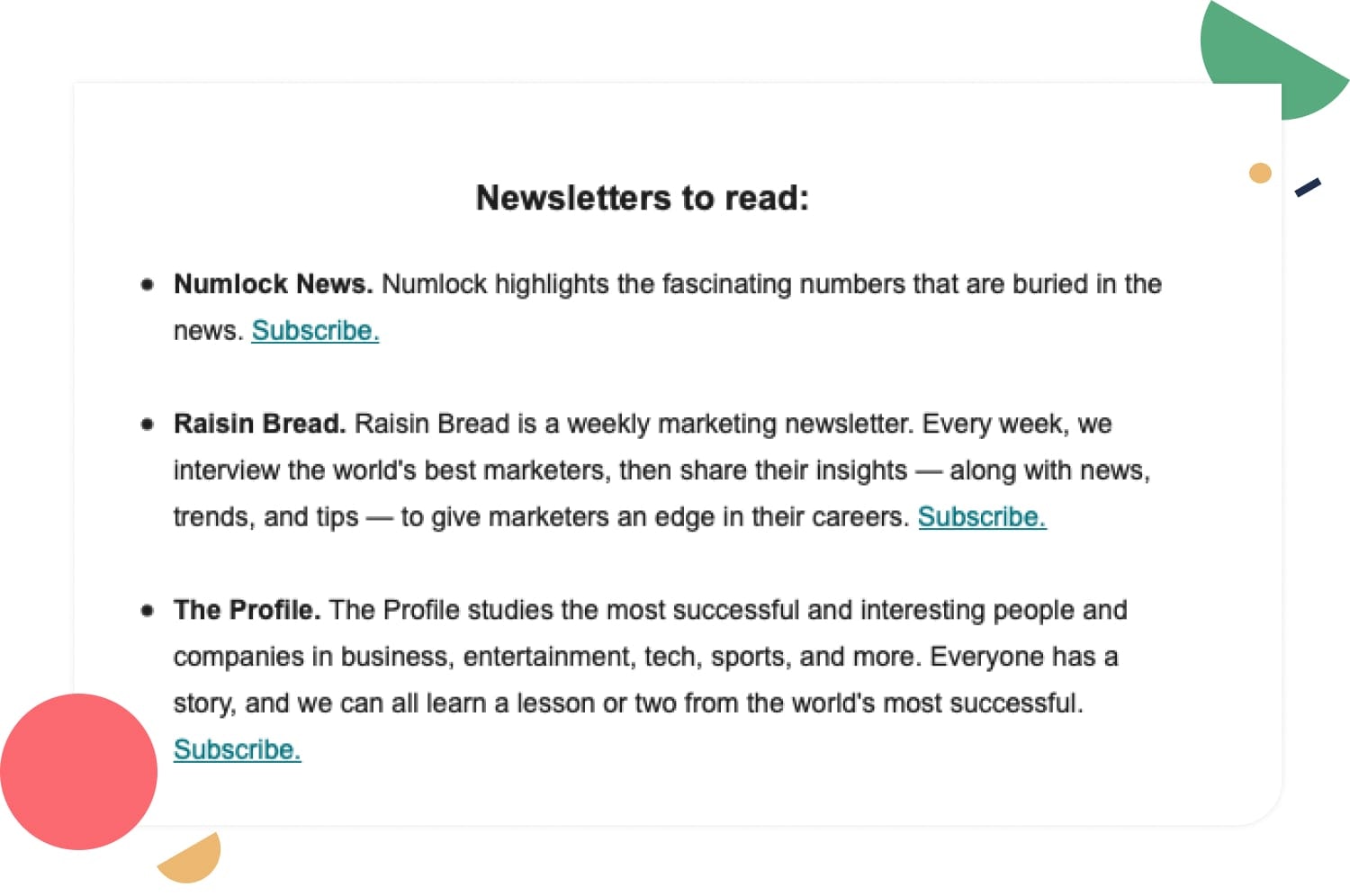
Building out an email list not only gives you another channel to market your affiliate links but also gives you ownership over your audience. Unlike social algorithms that change regularly, every time you send an email it will be delivered to each of your subscribers. There’s no algorithm that will stop your happy subscribers from getting your newsletters.
Strategy #3: Tell listeners in your podcast
Your podcast is a one-on-one conversation with your audience or a way for them to get to tap into the conversations you’re having with like-minded people as you interview them. It’s an intimate moment where they’re focusing on what you have to say…and what you recommend for them.
You can promote affiliate links in your podcast by talking about what you love about the product and why you think your audience would love it too. Through an audio format, you can go into a lot of detail about why you love a product and how you use it.
Meditation teacher Mimi Buchard promotes Organifi products on her podcast through an affiliate link. She spends a few minutes talking about her favorite Organifi drinks, what time of the day she enjoys them, and how she makes her drinks for a personal touch during each ad read. Then, she links her personal affiliate link in the show notes so her audience can easily find it and buy Organifi using her discount.
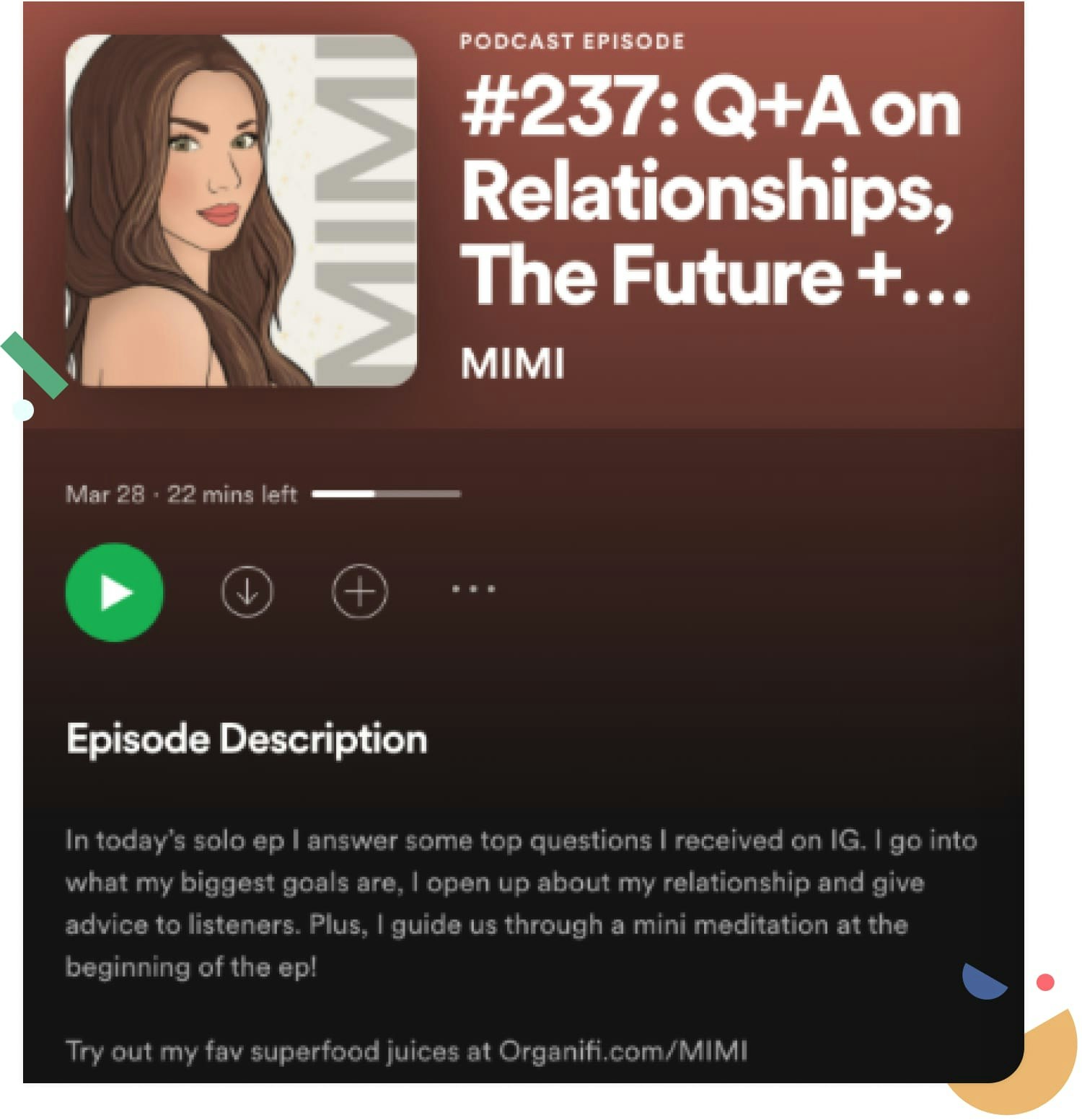
Strategy #4: Include links in your videos
Your videos are a dynamic way to show your audience how you use the product that you’re promoting. You can also embed your videos into your emails in ConvertKit to keep showing your audience why you love the affiliate product. This is a great way to repurpose your content so that it gets more views and you don’t have to create an entirely new piece of content each time you promote your affiliate link.
Videos give you a dynamic way of sharing your product recommendations. Promote your affiliate links in your YouTube videos by sharing screenshots and screen recordings of how you use the product to show your audience that you genuinely love using it (and increase the number of people who trust your recommendation and sign up to use it).
Colin and Samir, a Los Angeles-based duo covering the creator economy, promote their affiliate link for Public in several of their videos. In each YouTube video, they’ll add a link to their affiliate link in the description as well as mention it a few times during the video. They’ll also show how they use the product and why they love it, showing the viewer screenshots that help them get familiar with the product (and most importantly—how it will benefit them).
Strategy #5: Add links to your digital products
Even your products can have affiliate links in them if it helps your audience. If you have a course that teaches people how to build their email list, having an affiliate link for ConvertKit integrates perfectly into that course. You want your audience to take action on what you’re teaching them and showing the products you use is an easy way for them to get started.
You can add affiliate links to your products to help your audience get started on the advice you give them (like using an online platform, taking a course, or signing up on behalf of your recommendation). Just be careful of other newsletter platforms that will delete your account if you promote affiliate content and don’t give them a cut.
Creators that use ConvertKit Commerce to sell digital products can add affiliate links that help their audience to learn more about a topic (like if they promoted signing up for Masterclass) or to use an online tool or platform (like promoting using ConvertKit to start an email newsletter).
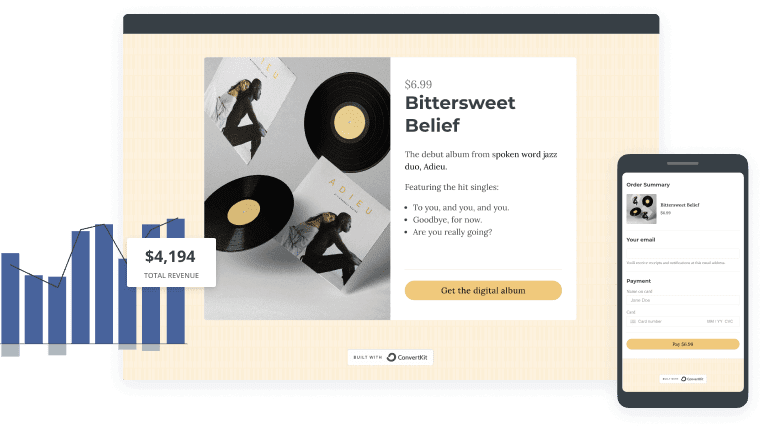
Strategy #6: Share on social media
You’re probably used to seeing affiliate organic social posts because influencer marketing is a huge part of digital marketing these days. Use organic social posts to talk about your favorite products with a swipe-up link so your viewers can easily buy them with your discount.
These organic social posts get worked into your other content (the content that doesn’t promote products) in a cadence that ensures your audience doesn’t feel like your profile is just one big commercial. Just be sure to balance the number of promotional posts you’re publishing with non-promotional posts so your audience can still build a relationship with you (without feeling like you’re just trying to sell them stuff!).
Influencers like Helen Owen use affiliate links to get commission on their organic social posts, like this one promoting Verb Bars. Alongside content from her camping trip, she posts about Verb Bars and why they make the perfect on-the-go snack. She also added her affiliate link so that every time someone swipes up and buys Verb Bars, she gets commission from that sale.
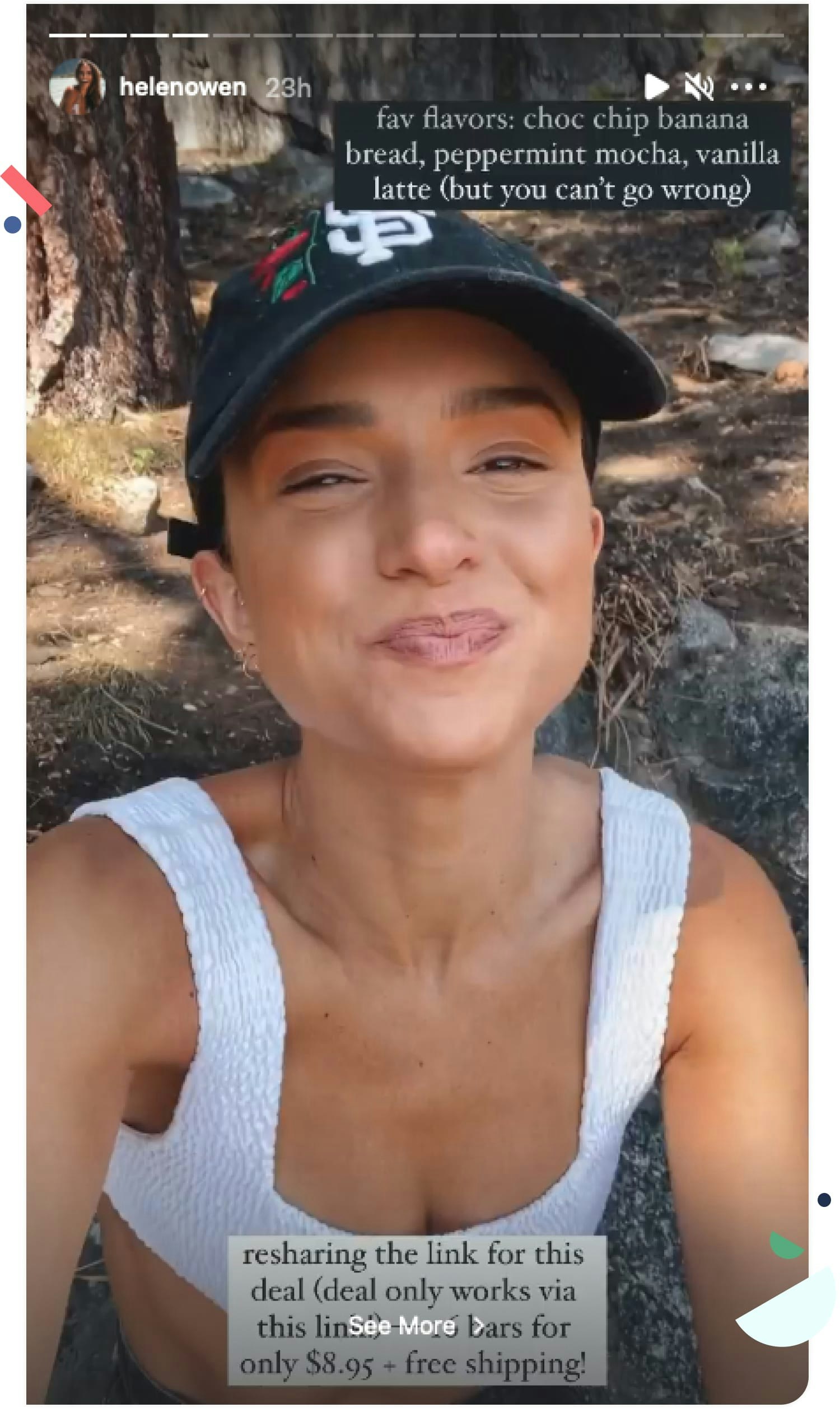
Strategy #7: Use paid ads to scale your marketing
Paid ads for affiliate links can run on your website or blog or even on your social accounts. These are paid ads that you’ll have to manage through an ad platform. This part of affiliate marketing can come with a big learning curve, so don’t worry about running paid ads unless you have experience running ads or you’re working with a company that can handle the management.
Be careful if you’re running the ads yourself to make sure the investment is less than your payout (so you can make money!). You can use Facebook’s Ad Manager to run ads on Facebook or Instagram, TikTok Ads Manager to run TikTok ads, or Google Ads to run ads on your website.
Lifestyle influencer Kristin Johns works with Glamnetic to run paid ads that promote her affiliate link for their fake lashes. Instead of just keeping this video as an organic post on her Instagram feed, Glamnetic is paying for it to run as a sponsored post to a larger audience. Every time someone clicks on the Shop Now button and buys Glamnetic lashes, Kristin gets commission through her link.
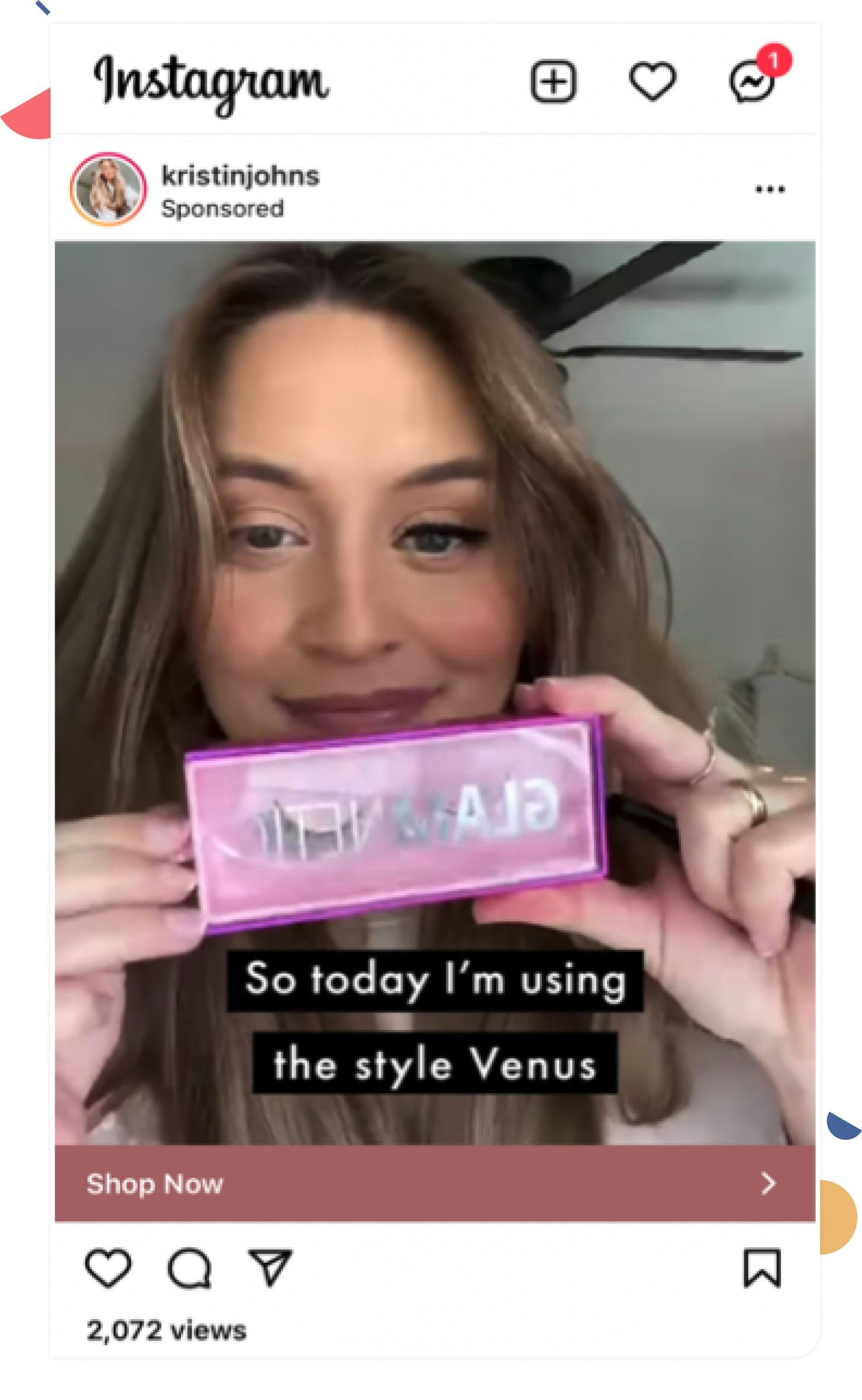
A few additional tips
Tip #1: Give your buyers a freebie
Offer an incentive like a How-to guide or video related to the product you’re promoting. It should be a freebie that’s easy to create for you or something you’ve already created in the past and provide them some addition value. It could be that little push they need to make their purchasing decision.
Tip #2: Disclose that you’re an affiliate marketer
People like transparency, so mention that you’re an affiliate and that you receive a commission rate if someone buys through your link. You can say it during your videos or podcasts but asl add the official legal blurb below the video, blog post, etc
Tip #3: Have a hub or resource page
Consider adding a resource page of you top affiliate products to your website. Focus on your favorite apps and tools that you actually use in your business along with a short description and –you guessed dit – an affiliate link that leads your visitors to the company’s page where they can either sign up or test it for themselves.

Comments
Post a Comment